

Real Madrid won their first League title in the fourth edition of the competition. Their majestic performances allowed them to stand undefeated in the championship. They won the title again the following year, becoming the first team in history to win the League twice. A month before the Civil War broke out in Spain in 1936, Real Madrid won the Cup of the Republic against Barcelona. When the war started, the Popular Front seized the Club, but it resurfaced thanks to the Salvation Committee three years later when the conflict ended.
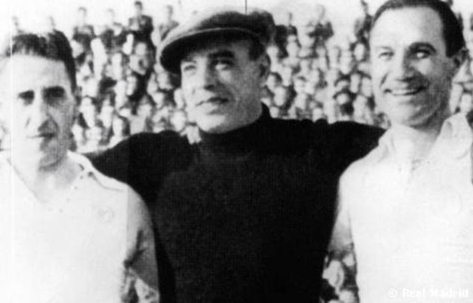
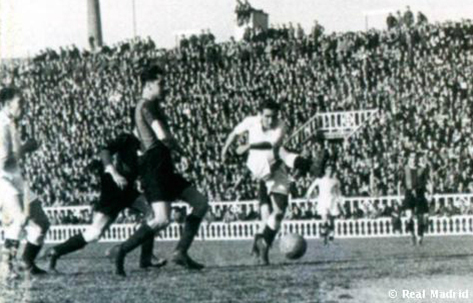
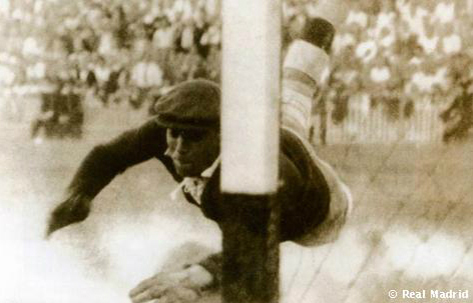
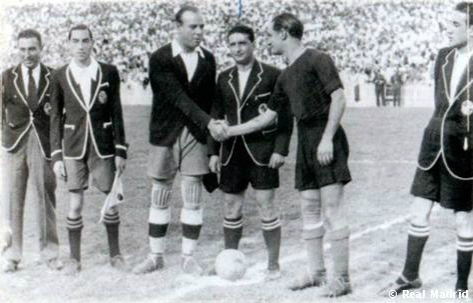
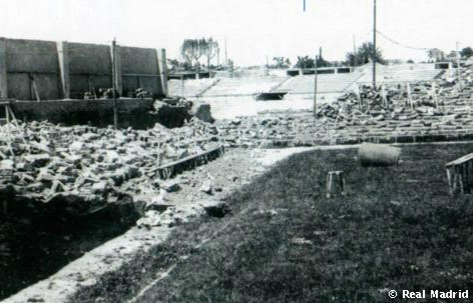
A BAR AT THE CLUB
At the start of 1931, Real Madrid renewed their headquarters on 15 Caballero de Gracia Street. The Club expanded its offices and bought new furniture. President Luis de Usera and Technical Secretary Pablo Hernández Coronado had new offices built, but the greatest novelty of them all was the construction of a bar in which visitors could refresh their dry throats during football gatherings.
REAL MADRID LOSE THEIR CROWN
On 14 April 1931, the arrival of the Second Spanish Republic deprived Madrid of their royal title and the crown was taken off the logo. From then on, they went back to being known as Madrid Football Club.
LEAGUE CHAMPIONS ON BARCELONA'S TURF
Real Madrid won the first of their 32 League titles in the 1931/32 season. The Madrilenian side stood undefeated in the competition that year and won with a three point advantage over Athletic Bilbao. The team won the title after drawing against Barcelona in the Catalonian city. The Whites won the League again the following year, thus becoming the first side to have won the championship twice.
Alberty, the first foreigner at Madrid Spanish football had opened itself to the rest of the continent, and on 12 June 1934 Madrid went on a European tour. During the trip, they signed Fortuna Dusseldorf’s Jacob Bender, but the German FA eventually didn’t allow the transfer. Months later, on 20 December, a team comprised of Spanish players faced the national team of Hungary at Chamartín Stadium in honour of the Spanish international players that took part in the Italian World Cup. After the game, Hungary goalkeeper Gyula Alberty Kiszely, signed for Madrid and became the first foreign player to play on the team in the Club’s history.
THE FIRST MADRID-BARCELONA CUP FINAL
On 21 June 1936, Madrid and Barcelona were pitted at Valencia’s pitch, Mestalla, to play the final of the Cup of the Republic -the former Cup of Spain. Two early goals by Eugenio and Lecue put the Whites ahead on the scoreboard, but Escolá netted a goal for the Catalans half an hour into the game. The latter had another shot on goal in the second half that was magnificently saved by Zamora, avoiding the draw and having to go into overtime. Madrid won the Cup a month before the outbreak of the Spanish Civil War.
SEIZED BY THE POPULAR FRONT
The war started on 18 July 1936. The same day, the Club, along with every other sports entity in the country, was seized by the Popular Front who appointed their own people to run it. That’s how Juan José Vallejo came to run the Spanish FA, the Football Association of Castilla and Madrid FC at the same time. Madrid kept functioning as always at the offices on 4 Recoletos Street with Pablo Hernández Coronado acting as Secretary and Head of the sports side of the Club, and Carlos Alonso being responsible for Chamartín Stadium.
MADRID VETOED BY BARCELONA
Pablo Hernández Coronado tried to make Madrid survive during the war, but the three steps he took trying to do so failed. He couldn’t manage to get the team to play in the Valencia Championship and the Catalan Championship and his project for a European tour collapsed. The Catalan Championship started on 4 October 1936 with the following teams: Barcelona, Espanol, Sabadell, Gerona, Granollers and Badalona. Madrid coach Paco Bru managed to get the Catalan teams accept having Madrid in the tournament, but Barcelona vetoed them and they weren’t allowed to take part in the Championship in the end.
ESTABLISHMENT OF THE SALVATION COMMITTEE
The Salvation Committee was created when the war ended on 1 April 1939. It was presided by Adolfo Meléndez and it comprised Mssrs. Parages, Urquijo, Oliver, Coppel and Ortiz de Zárate. Its Secretary, Pablo Hernández Coronado, called up a meeting at 8 Fernanflor Street. After reviewing the appalling state Chamartín Stadium was in, Pedro Parages said, “This will be a complicated problem to solve because we will need approximately 300,000 pesetas to rehabilitate the stadium, an exorbitant sum these days.”
THE FIRST FULL HOUSE OF THE POST-WAR PERIOD
Chamartín Stadium reopened on 22 October 1939 to hold the first derby of the post-war period. It was a Regional Championship fixture in which Madrid defeated Atletico 2-1. Support for football didn’t decrease with the war, and despite the fact that the cheapest tickets cost five pesetas -a price heavily criticised back in the day for being too expensive- the stands were full of fans that fervently rooted for their team.